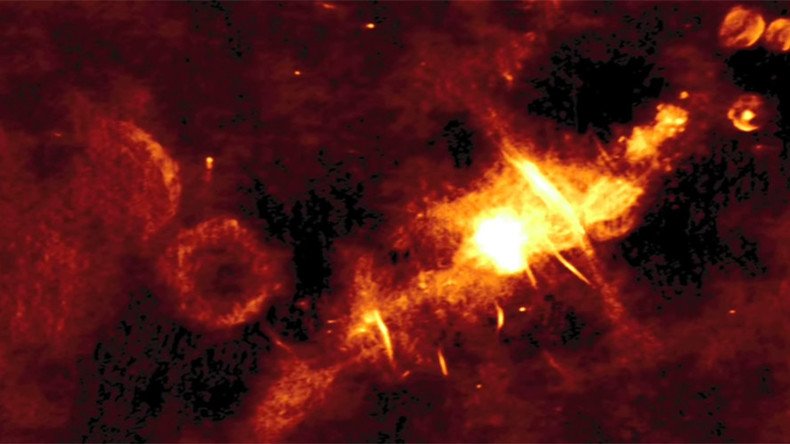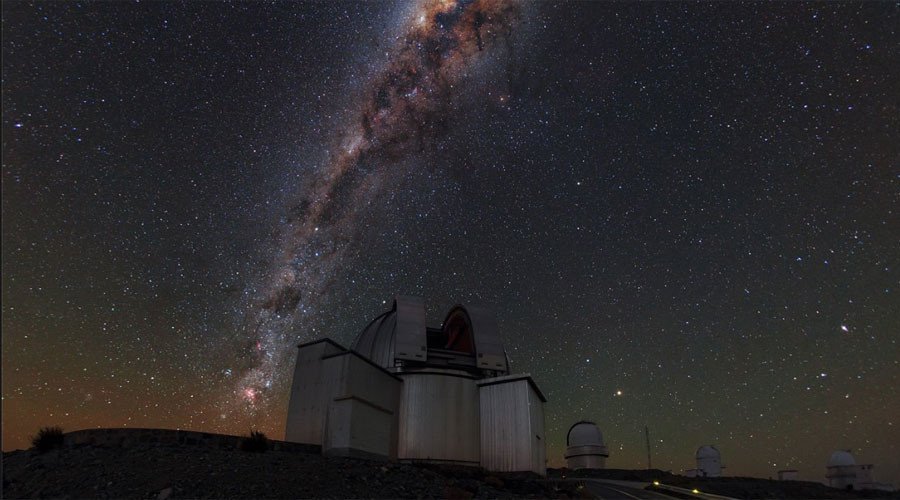Milky Way’s supermassive black hole will soon be visible as rival projects battle for first images

The race is on between two rival space research projects to capture the first images of a supermassive black hole in the center of the Milky Way.
Sagittarius A* may be 4,000 times the mass of the Sun but because it’s 20,000 light years from Earth getting a detailed look at this enormous phenomenon has proven quite tricky.
The Event Horizon Telescope (EHL) and GRAVITY projects are going head-to-head using very different techniques.
I liked a @YouTube video from @whatdamathhttps://t.co/PdN2EhcwWd In Search of Sagittarius A* - SUPERMASSIVE Black Hole [Space Engine]
— Michael Schwarz (@xwcg) August 9, 2016
EHL is all about radio waves and antennae. Thanks to interferometry, a network of global radio telescopes is being created to produce a ‘virtual’ telescope the full width of planet Earth. It’s hoped this will possess the required angular resolution to capture the bright ring beyond the event horizon of Sagittarius A*.
The GRAVITY project, funded by several European astronomy agencies, is based at the Very Large Telescope array at the Paranal observatory in Chile’s Atacama Desert - and it’s all about the optical approach. It aims to aggregate all the light of the four 8-meter telescopes of the VLT Interferometer to create another giant ‘virtual’ telescope which can view infrared light coming from the black hole.

“By doing this you can reach the same resolution and precision that you would get from a telescope that has a size, in this case, of roughly a hundred meters, simply because these eight meter-class telescopes are separated by roughly one hundred meters,” said astronomer Oliver Pfuhl, of Max Planck Institute for Extraterrestrial Physics, Germany.
“For about 10 years, we've known that this black hole is actually not black. Once in awhile it flares, so we see it brightening and darkening,” he said. This flaring is matter falling into the event horizon, generating a powerful flash of energy.
“The nature of these flares are poorly understood, but the instrument should be able to track this flaring material as it rapidly orbits the event horizon and fades away. These flares will also act as tracers, helping us see the structure of space-time immediately surrounding a black hole for the first time.
“Our goal is to measure these motions. We think that what we see as this flaring is actually gas which spirals into the black hole. This brightening and darkening is essentially the gas, when it comes too close to the black hole, the strong tidal forces make it heat up,” said Pfuhl.
"If we can study these motions which happen so close to the black hole, we have a direct probe of the space time close to the black hole. In this way we have a direct test of general relativity in one of the most extreme environments which you can find in the universe."
GRAVITY should gain a close look at the flares, and therefore the closeby regions of the black hole, while the EHT will focus on the shadow of the dark ‘event horizon’ - the point at which the hole’s gravitational pull prevents even light from escaping - surrounded by radio waves.
Adding to the intrigue of this astrological race is the role of Earth’s biggest radio observatory, another interferometer called the Atacama Large Millimeter/ Submillimeter Array (ALMA). It’s also based in the Atacama Desert and is being added to the EHT network.
ESO astronomer Linda Watson said: “ALMA is an interferometer with 66 antennas, (the EHT) will treat ALMA as just one telescope and will combine it with other telescopes around the world to be another interferometer.”












